This is an “elemental research” category page. It outlines interests around a specific topic. The links at the bottom lead to mostly photographic documentation of experiments and projects that touch on the topic.
Indigo:
The following text was written in the Fall of 2010 for a blog that I have since lost all online record of (in fact I don’t remember having published it). At the time, I was preparing The Illusion of Plans at Dorsch Gallery in Miami. For more on the production of that exhibition see The Illusion of Plans (research)
In August 2010 a companion and I traveled to the far northwestern corner of Vietnam, not far from the Chinese border. The Sa Pa District in the Lào Cai province and its eponymous main town have in the last decade become popular with tourists looking for the special form of authenticity that remote mountainous regions seem to evoke.
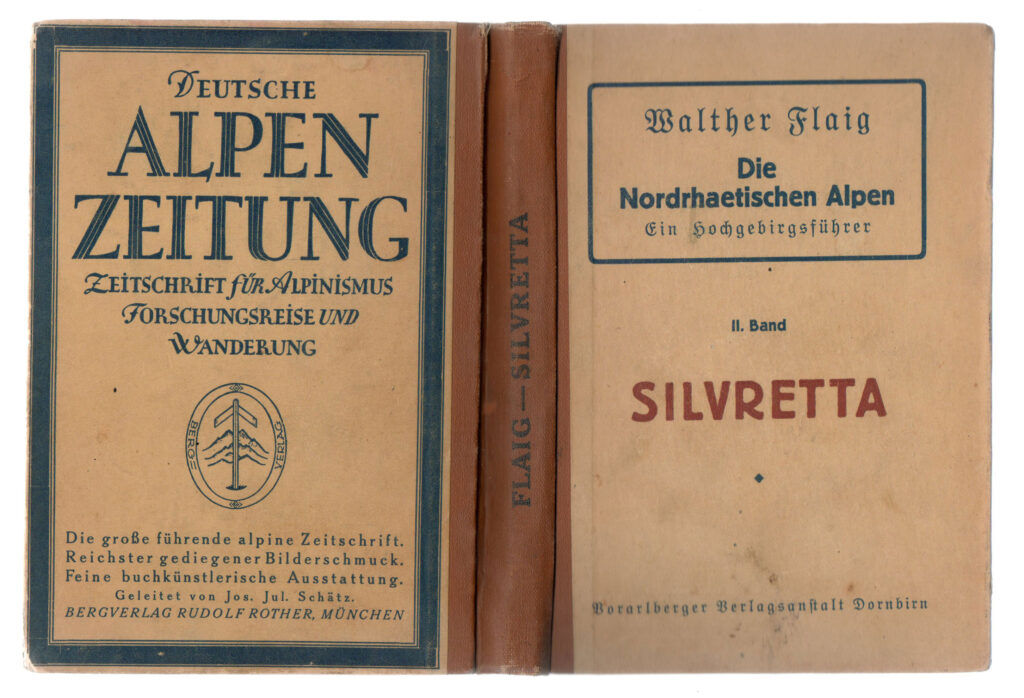
Sa Pa serves as a base for trekkers making their ascent of Fansipan Mountain which at 3,143m is the highest point on the Indochina Peninsula though its heights are rarely visible through the thick mists that ebb and flow through the region’s valleys.

The Northern ‘ethnic minority areas’ have become the focus of increased government attention, funding and development after years of neglect and overt repression including forced migration and the suppression of local languages. Most well known of the indigenous mountain peoples, the Hmong, now span the borders of Burma, Thailand, Laos and Vietnam. Like many peoples caught straddling the rougher parts of national borders, the Hmong have found themselves making often strange, contradictory, and perilous alliances.

The same Special Activities Division of the Central Intelligence Agency that played a major part in United States’ invasion of Afgahnistan and continue to operate throughout that and neighboring countries oversaw the training and deployment of 10,000 Hmong paramilitaries in Laos who between 1960 and 1975 operated deep within North Vietnamese territory. These operations became known as America’s “Secret War.”
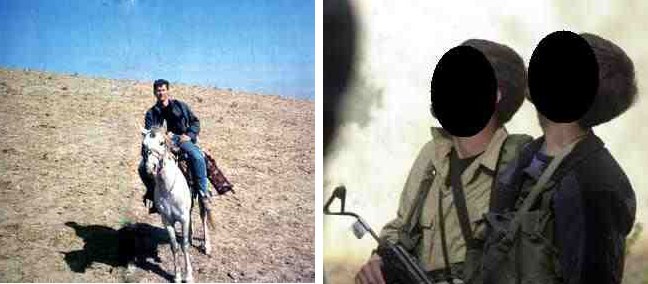
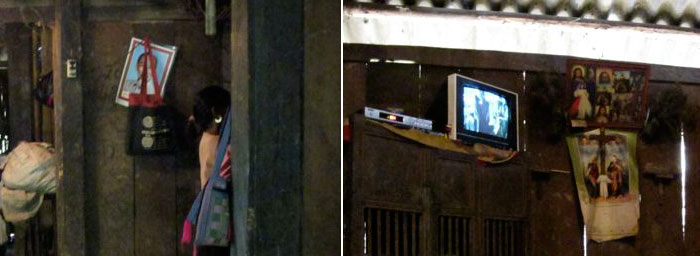
Some twenty years after the Vietnamese victory the government recognized the economic value of capitalizing on the remaining Hmong and other “minority ethnic groups.” Over the past decade tourists have begun flocking to the area to enjoy a natural beauty that shows almost no signs of having been subject to one of modern history’s most horrific human and environmental catastrophes. That it also offers a bazaar form of anthropological voyeurism is unmistakable.
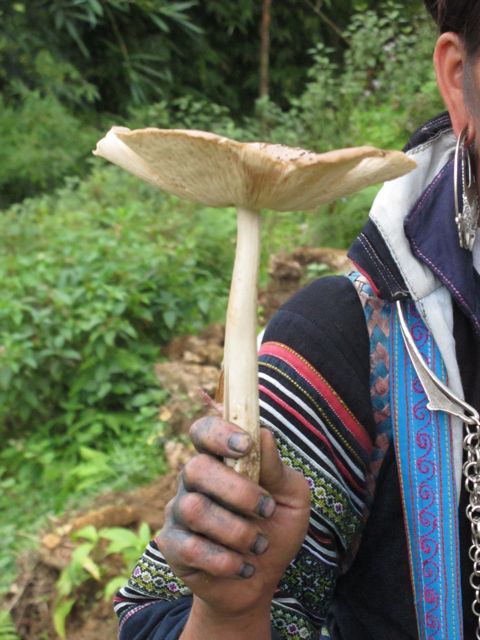
This was my first encountered Indigo and the peculiar process of oxidation that makes a caustic yellow slick turn to the dark blue/black. Among the ‘ethnic minorities’ in the Sa Pa region the ‘Black Hmong’ are immediately recognizable by their almost black blue indigo dyed traditional clothing and the blue stained hands that come from extracting and working with the indican contained in a local plant.
The dyestuff and the color with which it is associated are the result of the conversion of colorless indican through fermentation into indoxyl which when oxidized becomes the distincive color and substance known a indigo. Indican is contained in the leaves stems and other part of more than 400 species of plant across the globe most of which belong to the genus indigofera. Indigofera are legumonous plants with small round leaves, species of which vary from ground hugging vines to bushes 3-4 feet tall. Other plants such as Woad and Strobilanthes Cusia – commonly known as Assam Indigo or Chinese Indigo – also contain indican. The indigo used in Northern Vietnam appears to be derived from Strobilanthes Cusia and not from a species of indigofera.

I brought a stem of the plant from the used in Vietnam back to New York pressed between the pages of my notebook determined to unlock the mystery of the bubbling blue vats I had seen halfway around the world.
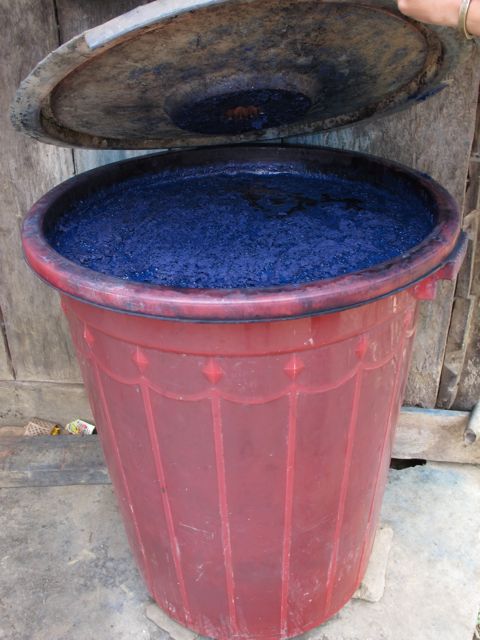
When used as a dye indigo must be kept in a solution from which as much absorbed oxygen as possible has been reduced. This requires highly alkaline, oxygen-poor solutions which were traditionally achieved through the use of urine and fermentation but can now be easily made using lye and chemical reduction agents like Diox and color-removing dye additives. In such solutions indigo is both water soluble and a bright yellow color. The blue of indigo is achieved through oxidation which occurs almost instantaneously when such solutions make contact with the air.
The oxidation process appears almost magical as items transform from yellow to blue within seconds. It is not unlike the cyanotype process which invented by English scientist and astronomer Sir John Herschel in 1842 is counted among the earliest photogrphic processes. In cyanotypes water-soluble compounds re converted into non-water-soluble compounds through exposure to UV-light after which the unexposed bright yellow soluble areas are washed away allowing the exposed non-soluble salts to oxidize becoming the familiar Prussian-blue of now obsolete blue-prints.
Moving back and forth between oxidation and reduction, non-solubility and solubility, aeration and fermentation, deep blue and acrid yellow is key to both indican extraction and indigo dying processes.
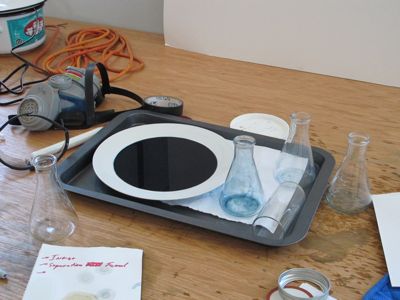
Home experiments in NYC with dryed indigo sold as “black henna” proved successful. For more on this process and the complex history of indigo in the US please refer to The Illusion of Plans (research)